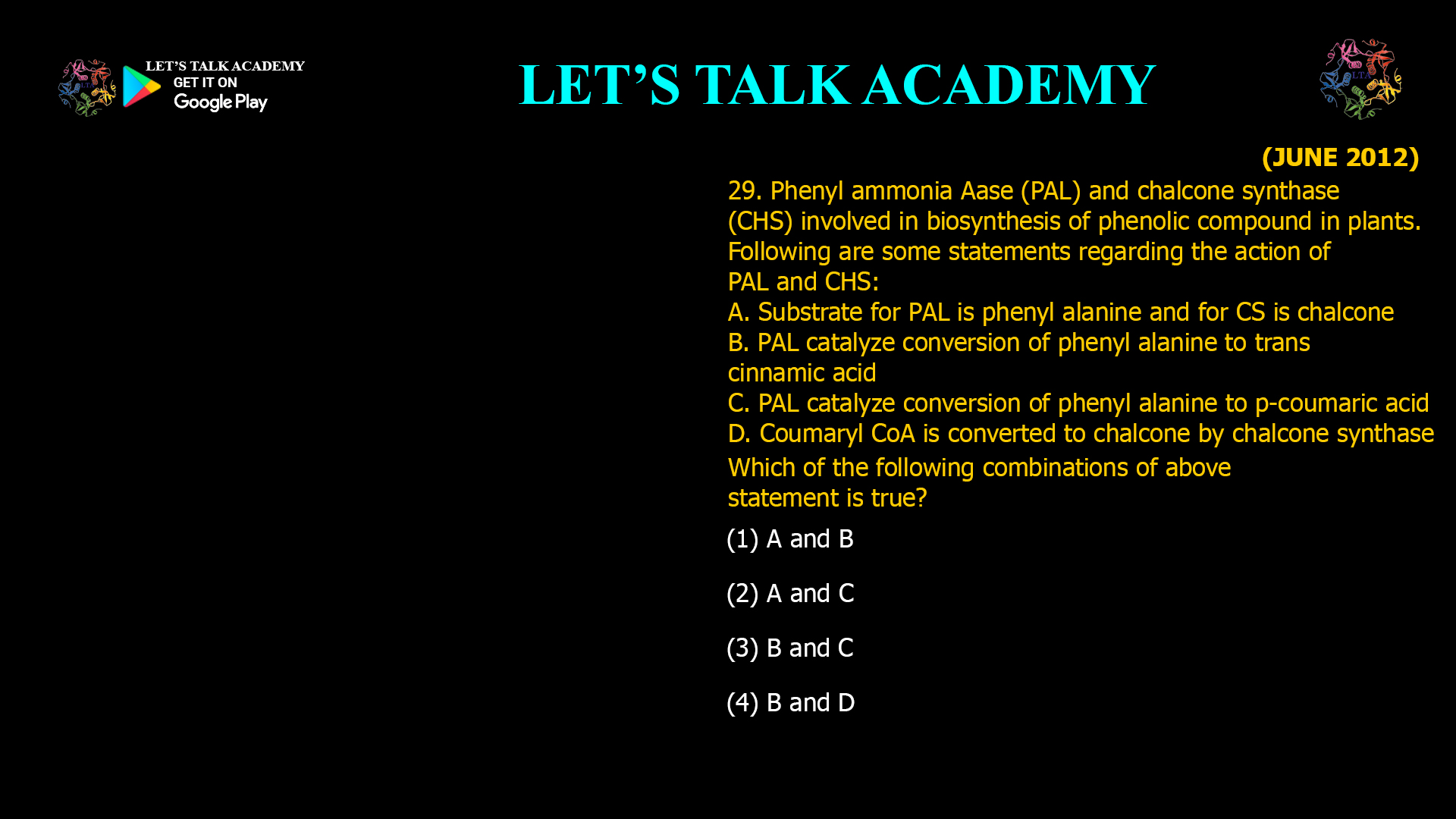- Phenyl ammonia Aase (PAL) and chalcone synthase (CHS) involved in biosynthesis of phenolic compound in plants. Following are some statements regarding the action of PAL and CHS:
A. Substrate for PAL is phenyl alanine and for CS is chalcone
B. PAL catalyze conversion of phenyl alanine to trans cinnamic acid
C. PAL catalyze conversion of phenyl alanine to p-coumaric acid
D. Coumaryl CoA is converted to chalcone by chalcone synthase
Which of the following combinations of above statement is true?
(1) A and B
(2) A and C
(3) B and C
(4) B and D
Correct answer: (4) B and D
Explanation:
-
(A) is false:
-
The substrate for PAL is phenylalanine, but for CHS it is p-coumaroyl CoA (not chalcone).
-
-
(B) is true:
-
PAL catalyzes the deamination of phenylalanine to form trans-cinnamic acid, the first step in phenylpropanoid biosynthesis.
-
-
(C) is false:
-
PAL does not directly produce p-coumaric acid; trans-cinnamic acid is hydroxylated to p-coumaric acid by cinnamate 4-hydroxylase.
-
-
(D) is true:
-
CHS catalyzes the condensation of p-coumaroyl CoA with malonyl CoA units to produce chalcone, the precursor for flavonoids and other phenolics.
-
Option-wise:
-
(1) A and B — A false.
-
(2) A and C — Both false.
-
(3) B and C — C false.
-
(4) B and D — correct.
Phenylalanine ammonia lyase initiates the phenylpropanoid pathway by converting phenylalanine to trans-cinnamic acid. Chalcone synthase then catalyzes the formation of chalcone from p-coumaroyl CoA, facilitating the biosynthesis of diverse plant phenolics vital for defense and pigmentation.



